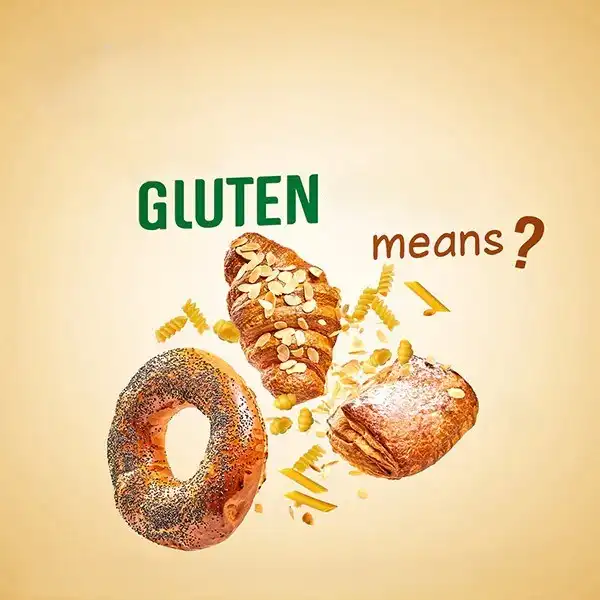Introduction
Have you ever heard the word “gluten” while shopping for food or watching a cooking show? You might have seen labels that say “gluten-free” on certain products. But what exactly is gluten, and why do some people avoid it? In this blog post, we will explore what gluten is, where it is found, and how it affects our bodies. Let’s dive in!

What is Gluten?
Gluten is a protein found in certain grains, such as wheat, barley, and rye. It acts like glue to hold food together, giving bread its chewy texture and helping dough rise when baked. The word “gluten” comes from the Latin word for glue, which makes sense because it helps provide elasticity to foods made from flour.

Where is Gluten Found?
Gluten is found in many everyday foods, including:
- Bread (white, whole wheat, multigrain)
- Pasta (spaghetti, macaroni, noodles)
- Cereals (cornflakes, granola, muesli)
- Cakes and biscuits
- Pizza bases
- Gravy and sauces (some thickened with wheat flour)
- Processed foods (like soups and ready meals)

Since gluten is used in many foods, it can be hard to avoid if you’re not careful!
Why Do Some People Avoid Gluten?
Some people have to avoid gluten for health reasons. There are three main conditions related to gluten sensitivity:
1. Coeliac Disease
Coeliac disease is a serious autoimmune disorder where the body mistakenly attacks the small intestine when gluten is eaten. This damages the gut and makes it hard to absorb nutrients from food. Symptoms include stomach pain, diarrhoea, tiredness, and weight loss. People with coeliac disease must completely avoid gluten to stay healthy.

2. Gluten Sensitivity
Some people experience symptoms like bloating, stomach pain, and tiredness after eating gluten but do not have coeliac disease. This is called non-coeliac gluten sensitivity. Unlike coeliac disease, gluten sensitivity does not cause damage to the intestine, but avoiding gluten can still help these individuals feel better.

3. Wheat Allergy
Wheat allergy is different from coeliac disease. It is an allergic reaction to wheat proteins (including gluten). Symptoms can include swelling, hives, difficulty breathing, and even anaphylaxis in severe cases. People with a wheat allergy must avoid wheat but can sometimes eat other gluten-containing grains like barley or rye.

Is Gluten Bad for Everyone?
No! Gluten is safe for most people and is even beneficial because whole grains contain important nutrients like fibre, vitamins, and minerals. However, for those with gluten-related conditions, avoiding it is necessary.

How to Eat a Gluten-Free Diet
For those who must avoid gluten, there are many alternative foods available. Some gluten-free grains include:
- Rice
- Quinoa
- Corn (maize)
- Oats (if labelled gluten-free)
- Buckwheat
- Millet
- Sorghum

Many gluten-free versions of common foods like pasta and bread are also available in supermarkets.
Fun Facts About Gluten
- Did you know that soy sauce often contains gluten? If you’re avoiding gluten, look for tamari instead.

- Gluten is used in some cosmetics and even medications!

- Some ancient grains like spelt and kamut contain gluten, even though they are sometimes mistaken as gluten-free.

Conclusion
Gluten is a protein found in wheat, barley, and rye, and it plays an important role in giving foods their texture. While most people can eat gluten without any problems, some must avoid it due to health conditions like coeliac disease or gluten sensitivity. If you or someone you know follows a gluten-free diet, there are plenty of delicious and healthy alternatives available!
For more interesting Story, please visit www.kidzherald.com




